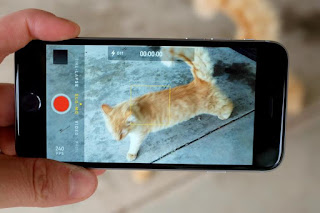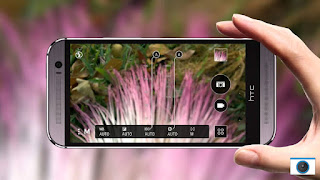A smartphone is probably the most comfortable camera you can have. You'll always have it with you, its right inside your pocket, and it doesn't require any manual adjustments before you can take a picture. Even if you own a nicer camera, you'll probably still use your smartphone to take unexpected photo shots, yet we can't help but feel down whenever that one beloved shooting mode is unavailable with a new device we have our eyes on. Want a few examples? here we go
1.Slow motion video
While slow motion videos taken by phones isn't something that Apple invented or implemented first in smartphones, it was iPhones that really put the feature to the forefront of our minds. Today, a number of flagship devices have the option to shoot at 120 framers per second and 720p resolution, while the iPhone 6 and iPhone 6 Plus can even do the incredible 240 famers per second for some incredibly smooth, slow motion goodness.
2.Proper software bokeh
With traditional DSLRs, bokeh is the background blur effect surrounding your in-focus subject, created by the camera's optics. With smartphones, this isn't possible, so some manufacturers have been resorting to software or 'fake' bokeh that is created by intelligent algorithms. Trouble is, most of these implementations are quite disappointing (Google's Lens Blur, we're looking at you!). But a great software bokeh effect isn't impossible, and third-party app Snapseed proves it. Its own implementation is among the very best we've seen, and we'd love for phone manufacturers to learn from it.
3.Shutter speed controls
Shutter speed, sometimes referred to exposure time, sets the exact time your camera's shutter will be open for when taking a photo. For example, quick shutter speeds are used when taking 'action' shots in order to avoid blur, while slower speeds are made use of in low-light scenarios, where you want as much light to hit the sensor as possible. Unfortunately, controls for shutter speed are still exceedingly rare with smartphones. This locks you out of some pretty creative uses — like 'light painting' or the ability to convey motion with a still photo. Trust us, this one is worth having for those times when you're feeling adventurous and in the mood to experiment.
4.Proper manual exposure correction
Speaking of exposure correction, we've got to give it to Apple: its manual control over it is so easy that companies like Xiaomi just had to follow suit. The way it works is simple. You tap on the screen to focus, as you would normally do, but if you're unsatisfied with the exposure of the composition, you can slide your finger up or down to tweak it. It's incredibly easy even for rookies to get the hang of, and it's also an absolute breeze to use. We need this on more phones!
5.Independent Automatic Exposure/Automatic Focus
AE/AF, shorthand for Automatic Exposure/Automatic Focus, is an abbreviation usually followed by the word "lock". That is, some smartphones (say, iPhones and Galaxy flagships) allow you to lock exposure and focus on a single point of the composition, usually through a long press. And while that's occasionally nice to have, there's an even better feature in town: independent locks for AE/AF. What this allows you to do is lock the focus on the subject of your image, but set exposure separately as to enhance your photo.
6.Selfie panoramas
Speaking of selfies, we simply can't gloss over the importance of a selfie panorama mode that allows you to capture some great moments by including all your friends into the shot. Otherwise, you're typically limited to just a face or two in the composition, as the front-facing camera's lens are too narrow.
7.Manual focus controls
Setting focus manually is another feature that few devices offer today, and that's just sad. Whether you're looking to focus on objects just millimeters away from the camera lens, or just want to play around with artistic blur, having manual control over focus is a great thing to have.
8.Time-lapse video
Another incredible medium is time-lapse video, which allows you to condense very, very long periods of time into short clips like the one shown here. With some creative thinking and some patience, the results can be incredible!
9.360-degree panoramas
10.Rear camera selfies












